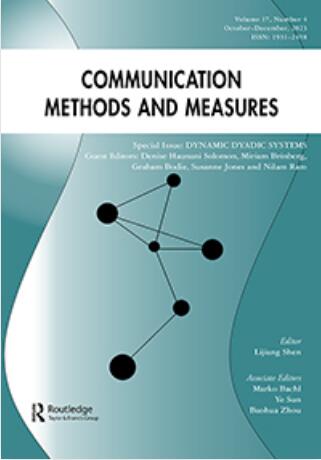情绪分析的有效性:手动注释、群组编码、词典方法和机器学习算法的比较
IF 3.7
1区 文学
Q1 COMMUNICATION
引用次数: 124
摘要
摘要情感是许多传播学研究的核心,从政治传播中的消极性和两极分化到分析其他子领域的产品评论和社交媒体评论。这项研究对情绪分析方法进行了详尽的比较,使用荷兰经济标题的验证集来比较使用传统和深度学习算法的手动注释、群组编码、大量词典和机器学习的性能。本文的三个主要结论是:(1)经过训练的人工编码或群组编码仍然可以获得最佳性能;(2) 使用过的词典都没有达到可接受的有效性水平;以及(3)机器学习,尤其是深度学习,显著优于基于字典的方法,但达不到人类的性能。从这些发现中,我们强调了在使用之前始终验证自动文本分析方法的重要性。此外,我们为(自动)文本分析项目提供了一种推荐的循序渐进的方法,以确保效率和有效性。本文章由计算机程序翻译,如有差异,请以英文原文为准。
The Validity of Sentiment Analysis: Comparing Manual Annotation, Crowd-Coding, Dictionary Approaches, and Machine Learning Algorithms
ABSTRACT Sentiment is central to many studies of communication science, from negativity and polarization in political communication to analyzing product reviews and social media comments in other sub-fields. This study provides an exhaustive comparison of sentiment analysis methods, using a validation set of Dutch economic headlines to compare the performance of manual annotation, crowd coding, numerous dictionaries and machine learning using both traditional and deep learning algorithms. The three main conclusions of this article are that: (1) The best performance is still attained with trained human or crowd coding; (2) None of the used dictionaries come close to acceptable levels of validity; and (3) machine learning, especially deep learning, substantially outperforms dictionary-based methods but falls short of human performance. From these findings, we stress the importance of always validating automatic text analysis methods before usage. Moreover, we provide a recommended step-by-step approach for (automated) text analysis projects to ensure both efficiency and validity.
求助全文
通过发布文献求助,成功后即可免费获取论文全文。
去求助
来源期刊

Communication Methods and Measures
COMMUNICATION-
CiteScore
21.10
自引率
1.80%
发文量
9
期刊介绍:
Communication Methods and Measures aims to achieve several goals in the field of communication research. Firstly, it aims to bring attention to and showcase developments in both qualitative and quantitative research methodologies to communication scholars. This journal serves as a platform for researchers across the field to discuss and disseminate methodological tools and approaches.
Additionally, Communication Methods and Measures seeks to improve research design and analysis practices by offering suggestions for improvement. It aims to introduce new methods of measurement that are valuable to communication scientists or enhance existing methods. The journal encourages submissions that focus on methods for enhancing research design and theory testing, employing both quantitative and qualitative approaches.
Furthermore, the journal is open to articles devoted to exploring the epistemological aspects relevant to communication research methodologies. It welcomes well-written manuscripts that demonstrate the use of methods and articles that highlight the advantages of lesser-known or newer methods over those traditionally used in communication.
In summary, Communication Methods and Measures strives to advance the field of communication research by showcasing and discussing innovative methodologies, improving research practices, and introducing new measurement methods.
 求助内容:
求助内容: 应助结果提醒方式:
应助结果提醒方式:


